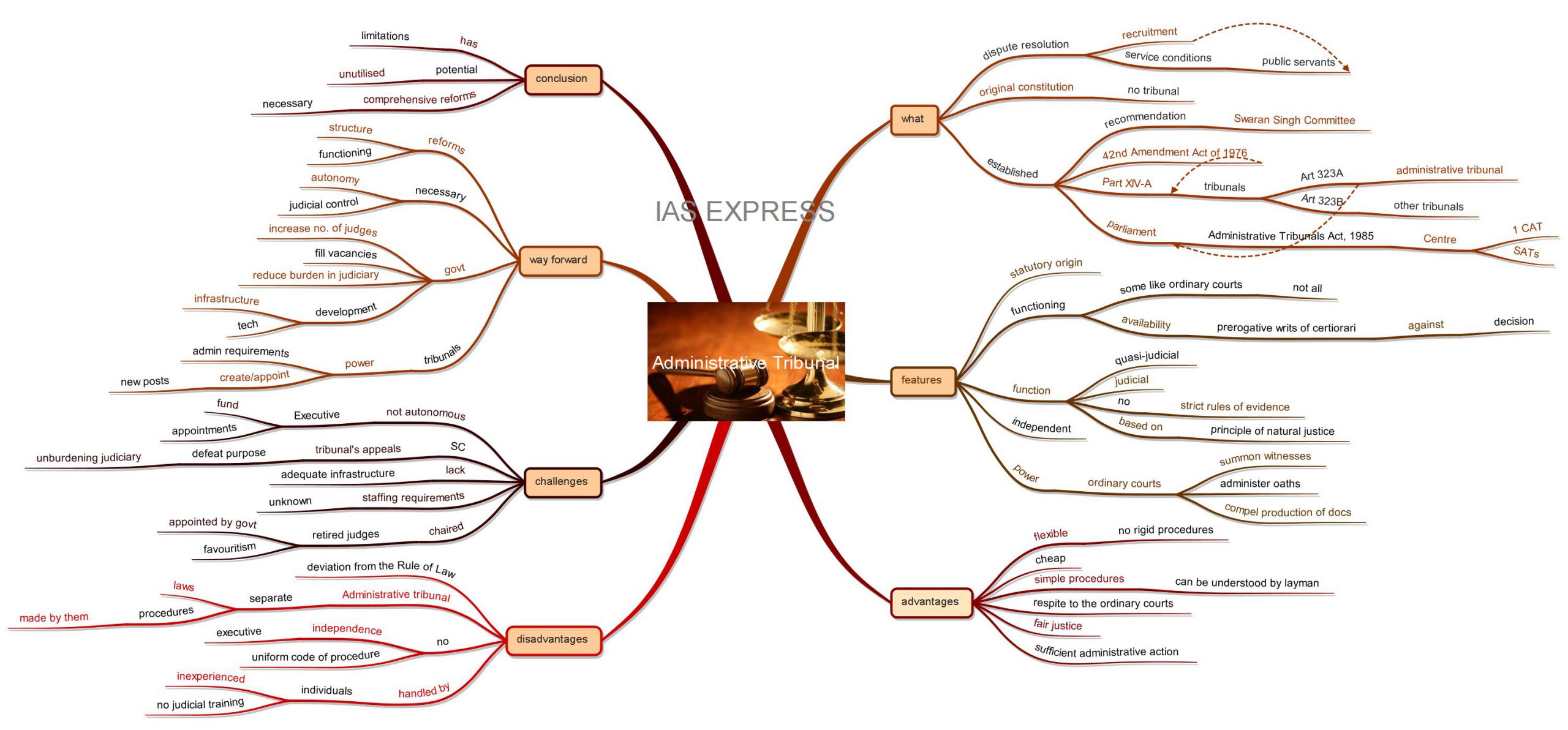Administrative Tribunals in India: Features, Pros, Cons, Challenges

The administrative tribunals are not a novel creation of India’s political system. Rather, they are well-recognised in the US and various other democratic nations in Europe. The administrative tribunal is vital in the current times as the traditional judicial system is proving to be inadequate to settle all disputes. The traditional judicial system is slow, costly and complex. It is, at present, understaffed and is overloaded with the already existing pending cases. It can’t deal with even important cases like disputes between employers and employees, strikes, etc in a fast-paced manner. These problems can’t be solved through a mere interpretation of the provisions of any statute. A comprehensive and holistic approach is necessary for long-term speedy solutions. This is where the tribunal comes in.
This topic of “Administrative Tribunals in India: Features, Pros, Cons, Challenges” is important from the perspective of the UPSC IAS Examination, which falls under General Studies Portion.
What is Administrative Tribunal?
- The administrative tribunals are involved in the resolution of disputes related to the recruitment and conditions of services of the individual appointed to the public services of the Centre, the states, local bodies, and other public authorities.
- The original constitution did not have provisions related to tribunals.
- It came to be following the recommendations of the Swaran Singh Committee on the establishment of Administrative Tribunals as a part of the Constitutional adjudicative system.
- As a result, the 42nd Amendment Act of 1976, which included a new Part XIV-A to the constitution, was passed in the Parliament.
- This part is entitled “Tribunals” and consists of two Articles – Article 323A (deals with administrative tribunal) and Article 323B (deals with tribunals for other matters).
- Article 323 A of the Indian Constitution gives the power to the Parliament to provide for the establishment of administrative tribunals.
- In accordance with Article 323A of the Indian Constitution, the Parliament had passed the Administrative Tribunals Act, 1985.
- This Act empowers the Central Government to establish one Central Administrative Tribunal (CAT) and State Administrative Tribunals
What are the characteristics of an Administrative Tribunal?
- The Administrative tribunals are of statutory origin, they must be created by any statute.
- They have some features of the ordinary courts but not all.
- They perform quasi-judicial and judicial functions and are bound to act prudently at all times.
- They are not accountable to strict rules of evidence and procedure. However, they function based on the principle of natural justice.
- The Administrative Tribunals are independent and are not subject to any administrative interference in the discharge of the judicial and quasi-judicial functions.
- An administrative tribunal enjoys the power of the court to summon witnesses, to administer oaths and to compel the production of documents, etc.
- The prerogative writs of certiorari and prohibition are available against the decisions of the administrative tribunals.
What are the advantages of the Administrative Tribunal?
- Flexibility: The procedures of the administrative tribunals are far more flexible than that of the courts where the individuals have to adhere to rigid procedures. It operates based on the principle of natural justice.
- Cheaper: The administrative tribunals are cheap and can ensure quick justice.
- Simplified procedures: The procedures of the administrative tribunals are simpler than the normal court proceedings and can easily be understood by a layman.
- The administrative tribunals come as a respite to the ordinary courts which are overburdened by numerous pending lawsuits.
- The tribunals provide sufficient administrative action and fair justice to all.
What are the disadvantages of the Administrative Tribunal?
- Administrative adjudication is a deviation from the Rule of Law.
- Administrative tribunals have their separate laws and procedures that are often made by them, leading to serious neglect to the principle the Rule of Law.
- Most of the tribunals don’t enjoy the same amount of independence from the Executive as do the courts and the judges.
- There is no uniform code of procedure in the administrative tribunals like that of the normal courts.
- The administrative tribunals are handled by individuals like administrators and technical heads who may have no experience or training related to the judicial proceedings. Sometimes they adopt summary procedures to deal with cases under their jurisdiction.
What are the challenges faced by the Administrative Tribunal?
- The functioning of the Administrative tribunals is not autonomous per se, as they are dependent on the Executive for the aspects like funding and appointments.
- In the Chandra Kumar case, the Supreme Court held that the appeals of the tribunals come under the jurisdiction of the court. This defeats the whole purpose of reducing the burden of the judiciary.
- The administrative tribunals lack adequate infrastructure to function efficiently.
- The staffing requirements of the tribunals are still unknown.
- The tribunals are chaired by the retired judges who are appointed by the government. Due to this reason, the present judges may show favouritism towards certain matters so that they may be appointed as a part of the tribunals during the post-retirement.
What can be the way forward?
- There is a need for reforms in the existing structure and functioning of the tribunal for better justice delivery.
- The autonomy of the tribunal is necessary for it to serve its purpose and objectives. It is currently under the mercy of the political interests of the executive branch of the government.
- To maintain the Rule of Law in society and for the safeguarding of the individual’s freedom, there is a need for some kind of judicial control over the tribunals.
- The government must take steps to increase the number of judges and filling up exiting vacancies so that the judiciary can dispose of the pending cases and also deal with appeals from the tribunals.
- The government must also take measures to bring forth technological and infrastructural developments for the efficient functioning of the tribunals.
- The tribunals must be given the power to deal with their administrative requirements by themselves. This may include empowering the tribunals to create or sanction new posts.
Conclusion:
The existing tribunals have numerous limitations and their full potential is not utilized at the present juncture. Comprehensive reforms are necessary for the efficient functioning of the tribunals and the speedy justice to the aggrieved public servants.



Thank you for the valuable information. I would much appreciate if you kindly share the organizational chart of the Administrative Tribunal.
Thankyou very much..but please allocate facility for 2x speed hearing..Thankyou so much for audio
Hi. The playback speed option is already available. Please click on the 3 dots menu on the player.